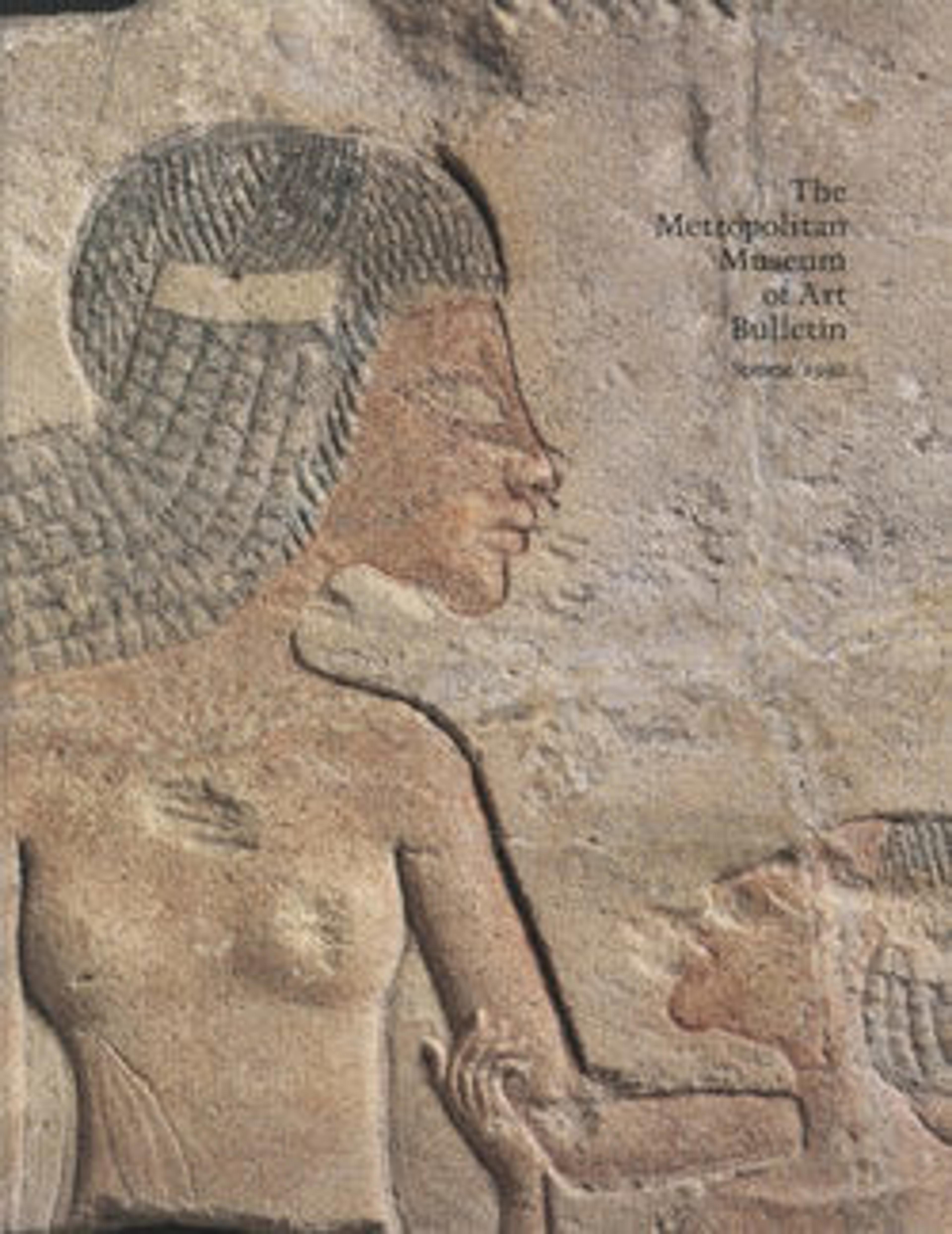Kohl Tube in the Shape of a Monkey Holding a Vessel
The Egyptians' use of eye cosmetics to enhance beauty and for prophylactic purposes is well documented both in artistic representations and by the cosmetic vessels that have been preserved from the earliest times. The most common substance utilized in the New Kingdom was kohl, a dark gray powder made from galena. Kohl was frequently stored in decorated tubes with long, slim sticks made of polished wood or stone as applicators. As in earlier periods, representations of monkeys often decorated cosmetic vessels in the New Kingdom. In this example the monkey stands balanced on its tail, its left leg slightly forward and its hands clasping a kohl tube. The ears, the ridges above the eyes, the nose, and the tufts of hair on the cheeks were carved with care. The stone was covered with a thick glaze ranging in color from light to dark blue-green, but the grain of the stone is still visible, giving the impression of heavily veined turquoise.
Artwork Details
- Title: Kohl Tube in the Shape of a Monkey Holding a Vessel
- Period: New Kingdom
- Dynasty: Dynasty 18, early
- Date: ca. 1550–1450 B.C.
- Geography: From Egypt
- Medium: Steatite (glazed)
- Dimensions: h. 6 cm (2 3/8 in); w. 4.1 cm (1 5/8 in)
- Credit Line: Gift of Norbert Schimmel Trust, 1989
- Object Number: 1989.281.101
- Curatorial Department: Egyptian Art
More Artwork
Research Resources
The Met provides unparalleled resources for research and welcomes an international community of students and scholars. The Met's Open Access API is where creators and researchers can connect to the The Met collection. Open Access data and public domain images are available for unrestricted commercial and noncommercial use without permission or fee.
To request images under copyright and other restrictions, please use this Image Request form.
Feedback
We continue to research and examine historical and cultural context for objects in The Met collection. If you have comments or questions about this object record, please complete and submit this form. The Museum looks forward to receiving your comments.
